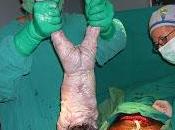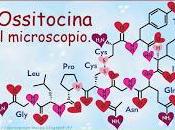 Ancora aggiornamenti sui cetrioli killer contaminati da Enterohaemorrhagic Escherichia coli. Ne riferisce eFoodAlert segnalando altre due allerta diramate da RASFF (Rapid Alert System for Food and Feed -Sistema di Allerta Rapido per Alimenti e Mangimi) che evidenziano un allargamento della distribuzione del prodotto: Austria, Repubblica Ceca, Danimarca, Germania, Ungheria, Lussemburgo e Spagna.
Ancora aggiornamenti sui cetrioli killer contaminati da Enterohaemorrhagic Escherichia coli. Ne riferisce eFoodAlert segnalando altre due allerta diramate da RASFF (Rapid Alert System for Food and Feed -Sistema di Allerta Rapido per Alimenti e Mangimi) che evidenziano un allargamento della distribuzione del prodotto: Austria, Repubblica Ceca, Danimarca, Germania, Ungheria, Lussemburgo e Spagna.Intanto, in Italia, il Ministro Fazio ordina un sequestro preventivo di 7 quintali di cetrioli per sottoporli ad analisi. A livello europeo, Pia Hansen, portavoce della commissione UE, annuncia che per mercoledì si conosceranno i risultati delle analisi degli esperti UE.
Secondo i dati aggiornati lunedì mattina in possesso della Commissione Ue, sono 329 i casi di contaminazione in Germania, trenta in Svezia, undici in Danimarca, tre in Gran Bretagna, due in Austria e uno in Olanda.Riferisce l'articolo del Corriere che nel frattempo si stanno concentrando le indagini su campioni di terreno dai quali provengono gli ortaggi incriminati.Intanto, Belgio e Russia hanno bloccato l'importazione di cetrioli dalla Spagna. Madrid, da parte sua, sembra intenzionata a chiedere un indennizzo all'Europa per le mancate vendite.La stessa fonte, The Sidney Morning Herald, riferisce
The Robert Koch Institute (RKI), Germany's national disease institute, said three deaths had been officially linked to the bacterium, but "in total about a dozen people have died according to regional authorities".E cioè che per ora, dal Robert Koch Intitute, ufficialmente solo 3 morti, delle 12, risultano legate al batterio.
Da Physorg riportano le affermazioni dell' ECDPC
The Stockholm-based European Centre for Disease Prevention and Control has described the outbreak of the strain of E. coli as "one of the largest worldwide and the largest ever reported in Germany".
 Uno dei focolai epidemici di Escherichia coli più esteso al mondo e il più grande mai registrato in Germania.
Uno dei focolai epidemici di Escherichia coli più esteso al mondo e il più grande mai registrato in Germania.Sul sito del European Centre for Disease Prevention and Control c'è un comunicato stampa che recita
Outbreak of Shiga toxin-producing E. coli in Germany
Epidemiological update, 30 May 2011
On 22 May, Germany reported a significant increase in the number of patients with haemolytic uremic syndrome (HUS) and bloody diarrhoea caused by Shiga toxin-producing E. coli (STEC). Since the 2nd May, 329 cases of HUS have been reported. While HUS is usually observed in children under 5 years of age, in this outbreak the great majority of cases are adults, with more than two thirds being women. Three of the HUS cases have died. Preliminary investigations indicate that serogroup O104 (Stx2-positve, eae-negative) might be the causative agent.
The source of the outbreak is under investigation, but contaminated food seems the most likely vehicle of infection. There is currently no indication that raw milk or meat is associated with the outbreak.
Most cases are from, or have a history of travel to the North of Germany (mainly Hamburg, Northern Lower Saxony, Mecklenburg-Western Pomerania). Within the EU, Sweden, United Kingdom, the Netherlands and Denmark have reported cases of HUS, related to the ongoing outbreak.
Based on the available information, cases are limited to, or have an exposure history in Germany (mainly northern parts) The vehicle of the outbreak has not yet been identified and intensive investigations are ongoing. The results of these investigations will determine the assessment of this risk. Rapid identification of potential cases linked to this outbreak, within Germany or among persons who have travelled to Germany since the beginning of May, is essential to prevent the development of severe disease.
STEC is a group of pathogenic Escherichia coli (E. coli) strains capable of producing Shiga toxins, with the potential to cause severe enteric and systemic disease in humans.
In sintesi: aumento dei casi di sindrome emolitico-uremica (HUS) e di diarrea emorragica causate dalle tossine del batterio E. coli. 329 casi di HUS, due terzi dei quali donne, in 3 casi la persona infetta è morta. L'origine del focolaio è ancora da scoprire ma del cibo contaminato sembra essere il probabile vettore. Non ci sono evidenze, per ora, che carne cruda e latte non pastorizzato siano coinvolti.
- Food Safety Notification/Outbreak (EU #2011.0702):
Enterohaemorrhagic Eschericia coli in cucumbers from Spain, packaged in Germany; distributed to Germany.
- Food Safety Notification/Outbreak (EU #2011.0703):
Enterohaemorrhagic Escherichia coli in organic cucumbers from Spain; distributed to Austria, the Czech Republic, Denmark, Germany, Hungary, Luxembourg and Spain.






